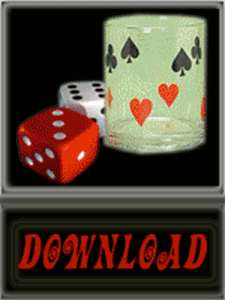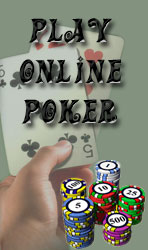Pokerwiner.com → Lessons of poker
THE DIFFICULTY OF DEFENDING AGAINST THE SEMI-BLUFF
To illustrate the difficulty of defending against the semi-bluff, we’ll take a seven card stud hand from our discussion of semi-bluffing in the preceding chapter and reverse roles:




You




Opponent
Suppose you bet on fourth street, and your opponent raises. Knowing your opponent is fully capable of semi-bluffing in this spot with something like a pair of 7s in the hole, you still should probably not call with a pair of 9s. He may in fact have a pair of queens or jacks. Or he may be semi-bluffing with a four-flush. The problem is that your pair of 9s is no favorite over a four-flush with a jack and a queen.
Thus, if your opponent has a pair of jacks, a pair of queens, or two pair, you may lose because he already has you beat; and if he has a four-flush, you may lose because he out draws you (which with his overcards as well, he’s a favorite to do). ( Evaluating the game.)
Even if your opponent has nothing better than a gut-shot straight draw, your two 9s with a king kicker are not a hand to be excited is semi-bluffing, it doesn’t do you much good to call with a poor hand because you have tow ways of losing: You may lose to a legitimate or by being outdrawn. Suppose you grit your teeth, close your eyes, and all call your opponent’s bet. The dealer raps on the table and deals the next card:





You





Opponent
What in the world do you do now? That nine of spades your opponent caught is a very scary-looking card. It might have made your opponent a flush. It might have made him a straigh. If it didn’t help him at all, well, then he was probably betting on fourth street with jacks or queens so that now he has a big pair and at least a three-flush maybe a four-flush.
All you can do is check, and when your opponent bets, as he surely will, you will probably throw away your hand, perhaps cursing the poker gods for delivering the 9 to your opponent and not to you. So here is a third way a semi-bluffer can beat you namely, by catching scare cards that force you to fold. If you don’t remember the exact hand from the previous chapter, all your opponent has in the hole, it turns
out, is 7 ![]() 7
7 ![]() .
.
Knowing that, it would of course be incorrect to fold at this point with two 9s and an ace, king kicker. Your opponent’s semi-bluff on fourth poker street, followed by his semi-bluff on fifth street, caused you do make a mistake, according to the Fundamental Theorem of Poker, in contrast to what you would have done if you could see your opponent’s hand. Your opponent gained, and you lost. However, not knowing what your opponent had, you did make the only sensible play.



